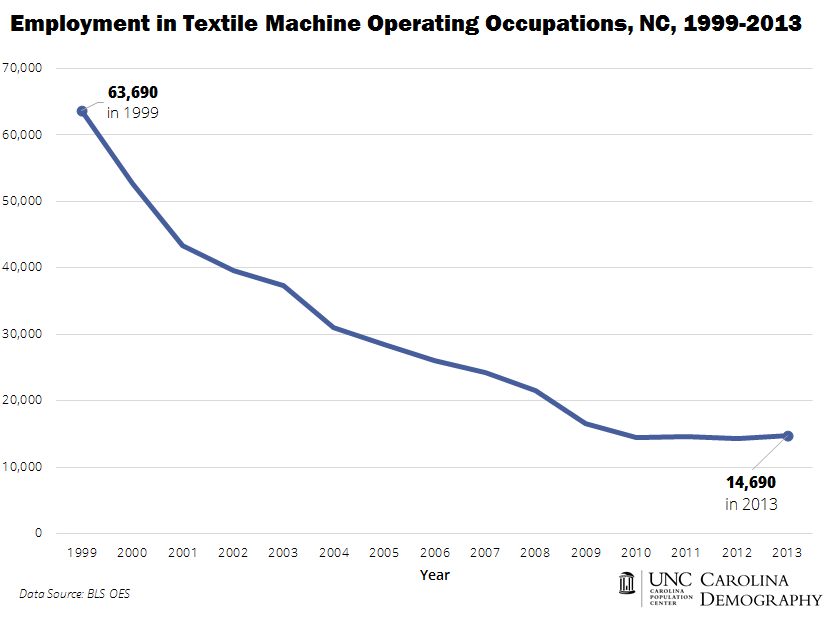North Carolina had nearly 9 times as many textile machine operators than would be expected based on national averages, according to recent analysis of Bureau of Labor Statistics data by the Pew Charitable Trusts. Georgia had more than 10 times as many textile machine operators than would be expected. In these two Southern states, the relatively high concentration of these jobs—as compared to national averages—reflects historical economic patterns that persist today.
Nationwide, just over 75,000 individuals were employed in textile machine operating occupations in 2013, according to the BLS. This occupation includes operators of bleaching and dyeing machines, cutting machines, knitting and weaving machines, and winding and twisting machines. Of these 75,000 employees, 23% were employed in Georgia and 20% were employed in North Carolina. South Carolina has another 10% of these employees, meaning that half of the nation’s textile machine operators are employed in one of these three Southern states.
Although North Carolina may have a disproportionately large share of the nation’s textile machine operators, they comprise a small portion of North Carolina’s labor force. Fewer than 15,000 North Carolina jobs were as textile machine operators in 2013, representing less than two-fifths of one percent (0.37%) of all jobs.
Statewide, employment in textile machine operating occupations has seen marked declines since its peak in the mid-to-late twentieth century. In 1999, there were 64,000 employees in textile machine operating occupations according to the BLS, less than half as many as reported similar occupations in the 1970 Census. And employment in these occupations has continued to decline. In 2013, just under 15,000 individuals were employed in textile machine operating jobs in North Carolina, a decline of 49,000 jobs or 77% since 1999.
Although textile manufacturing remains an important industry in many parts of the state, occupational employment projections from the Labor & Economic Analysis Division at North Carolina’s Department of Commerce predict that employment in textile machine operating occupations will continue to decline. By 2020, just 12,360 jobs statewide are projected to be in a textile machine operating occupation. This is a decline of another 2,330 jobs or 16% from employment in this occupation in 2013.
Your support is critical to our mission of measuring, understanding, and predicting population change and its impact. Donate to Carolina Demography today.